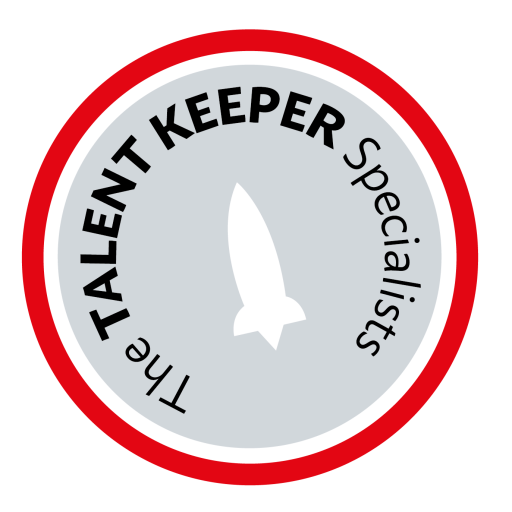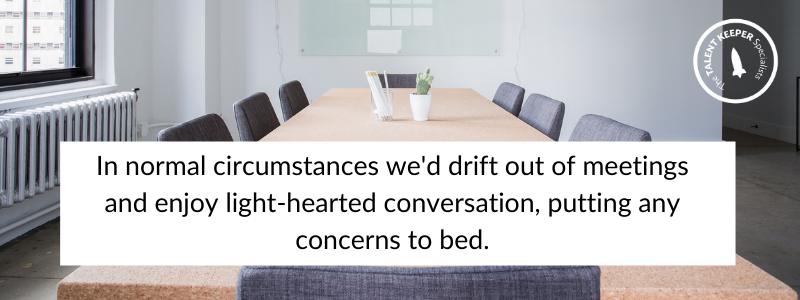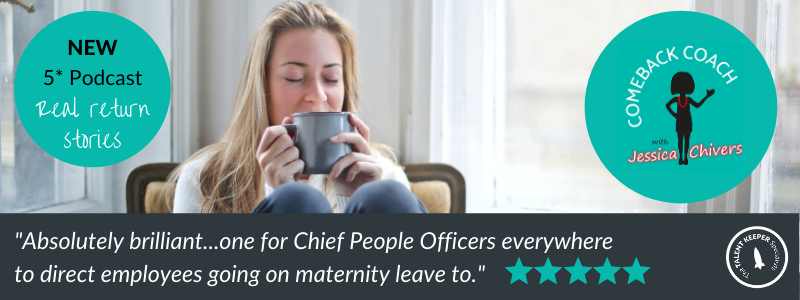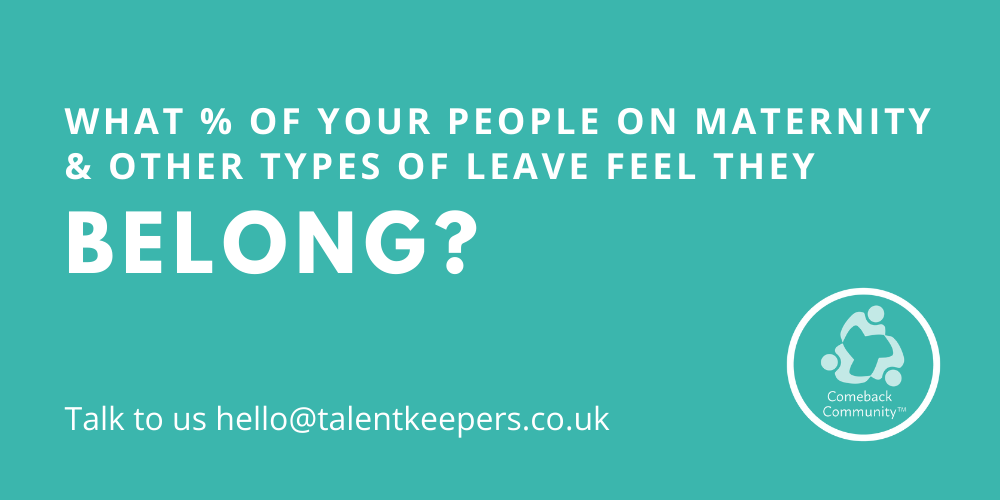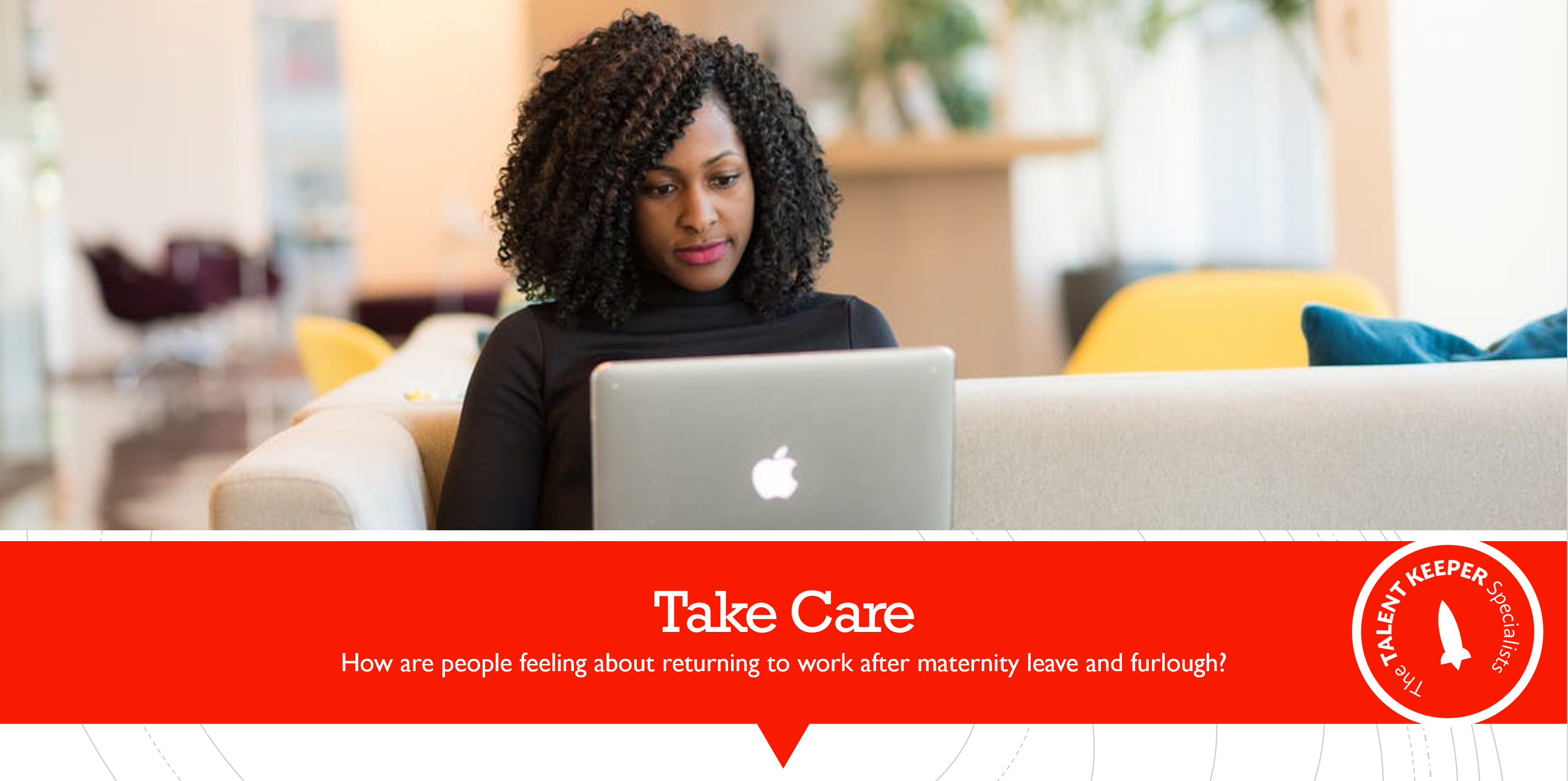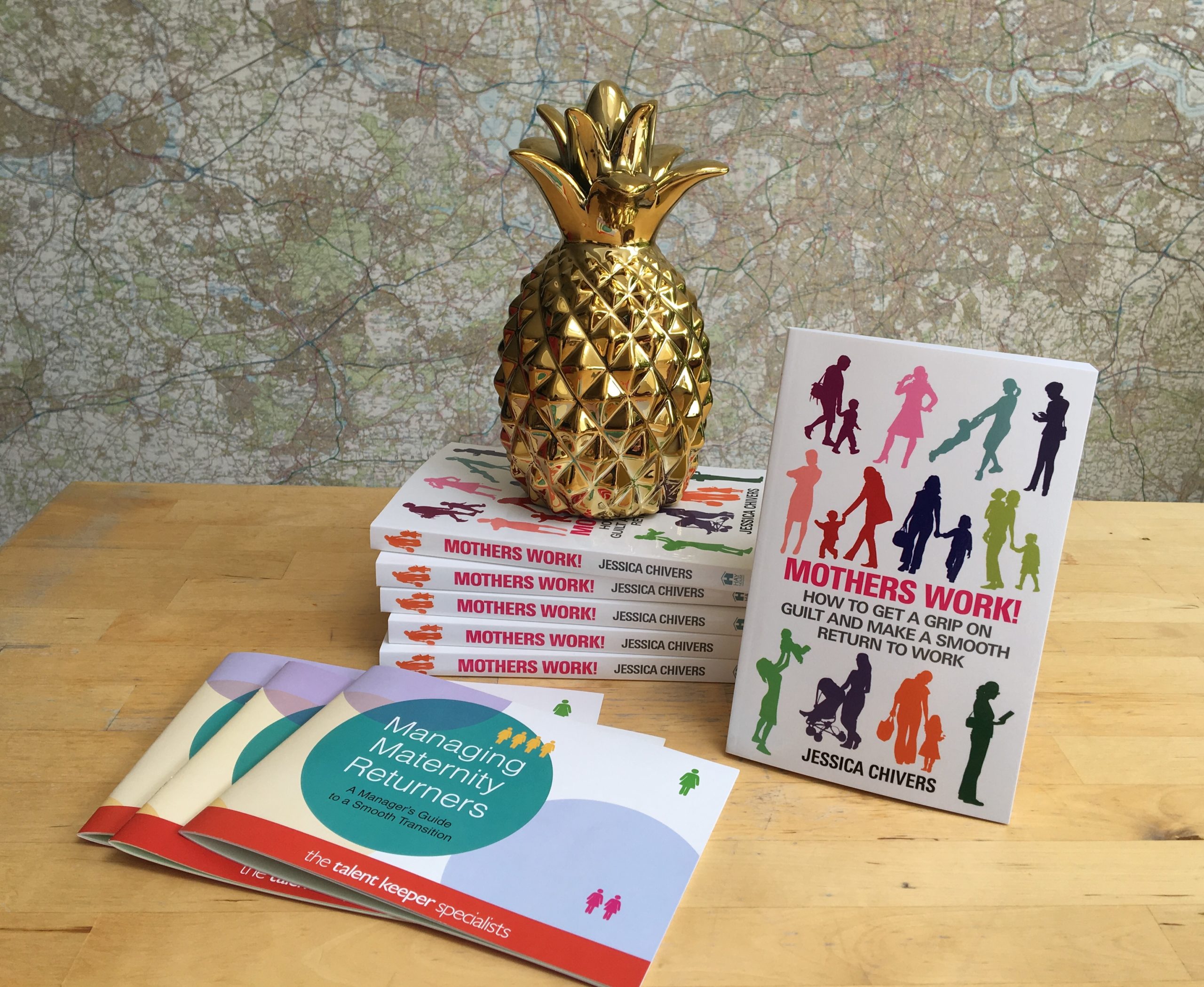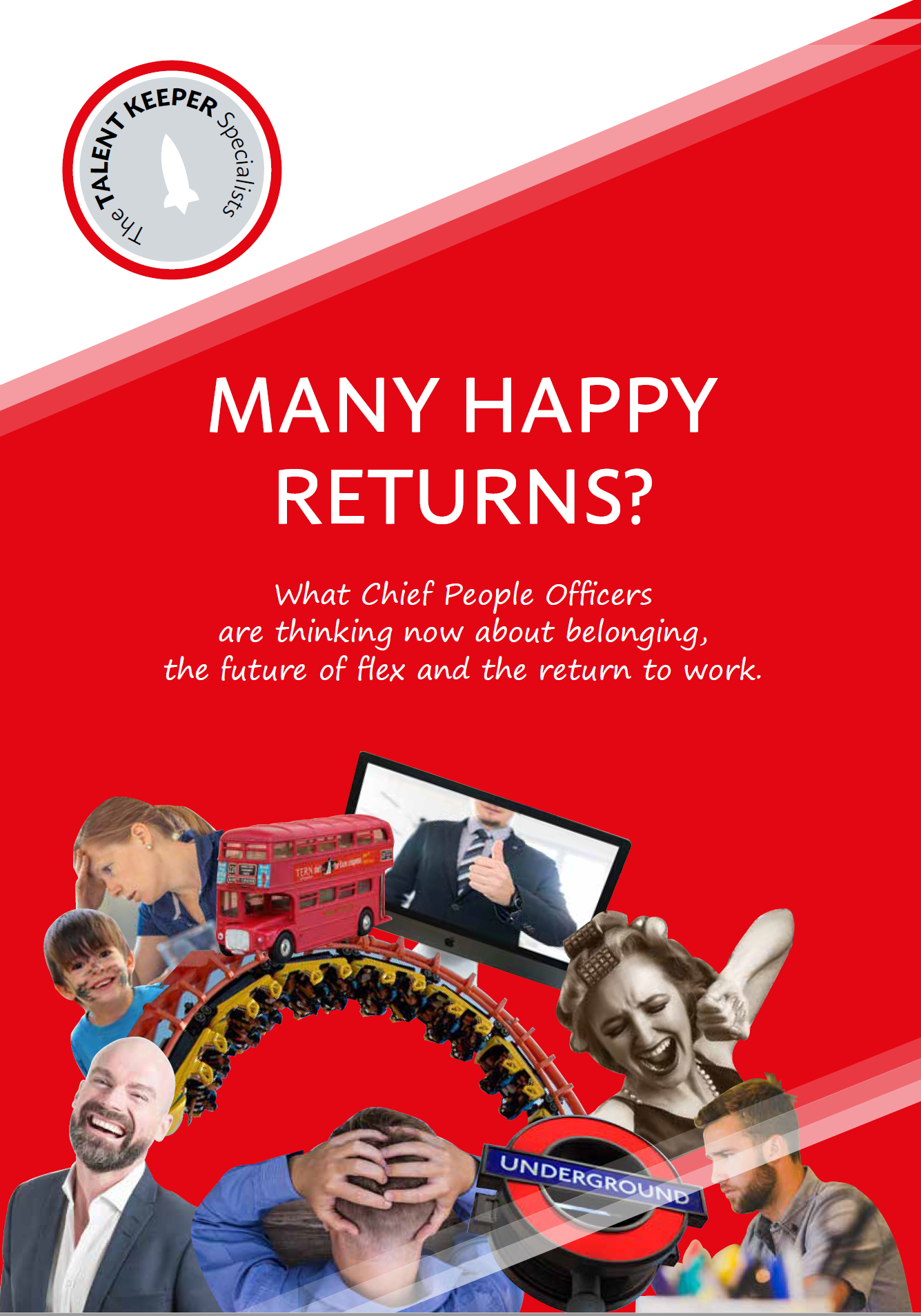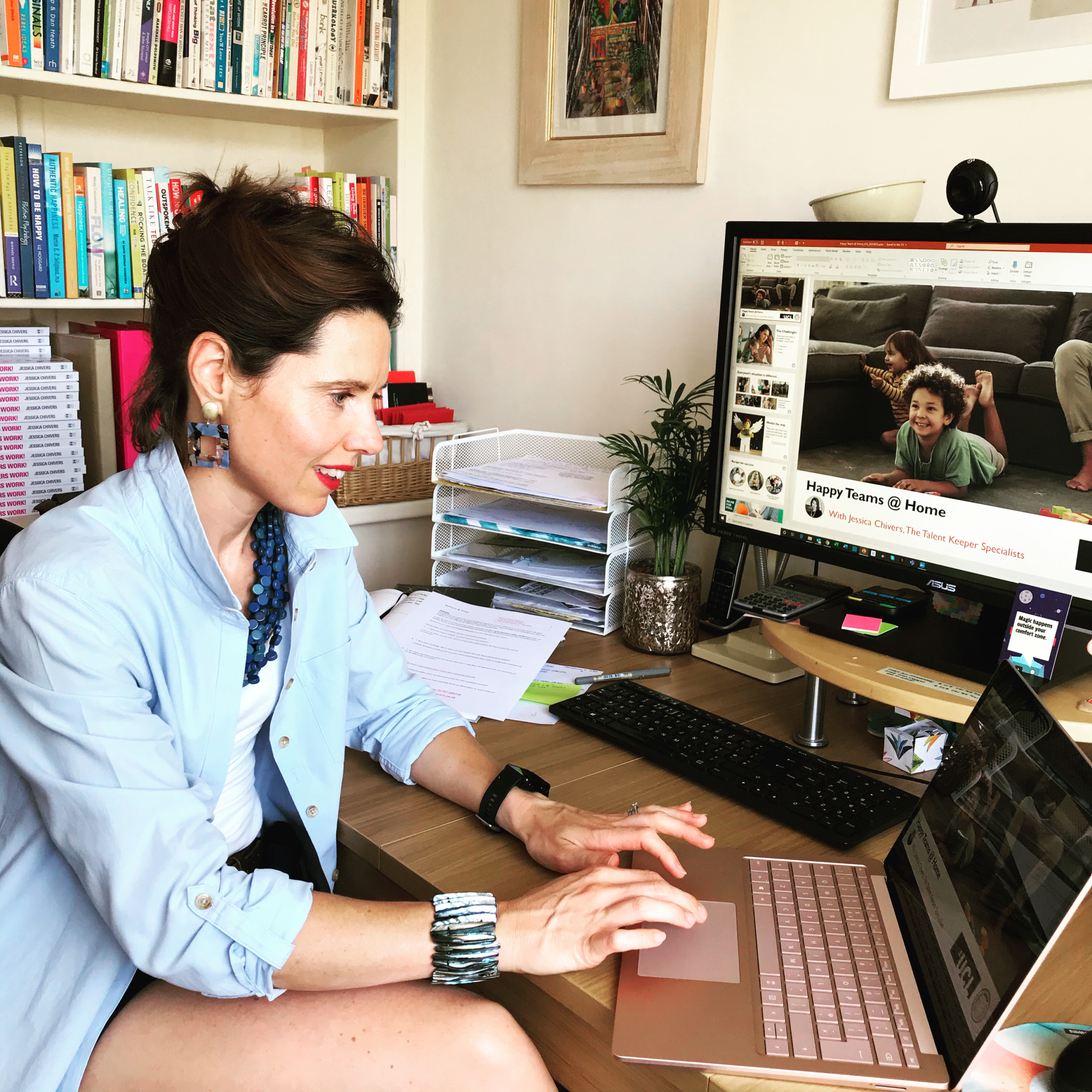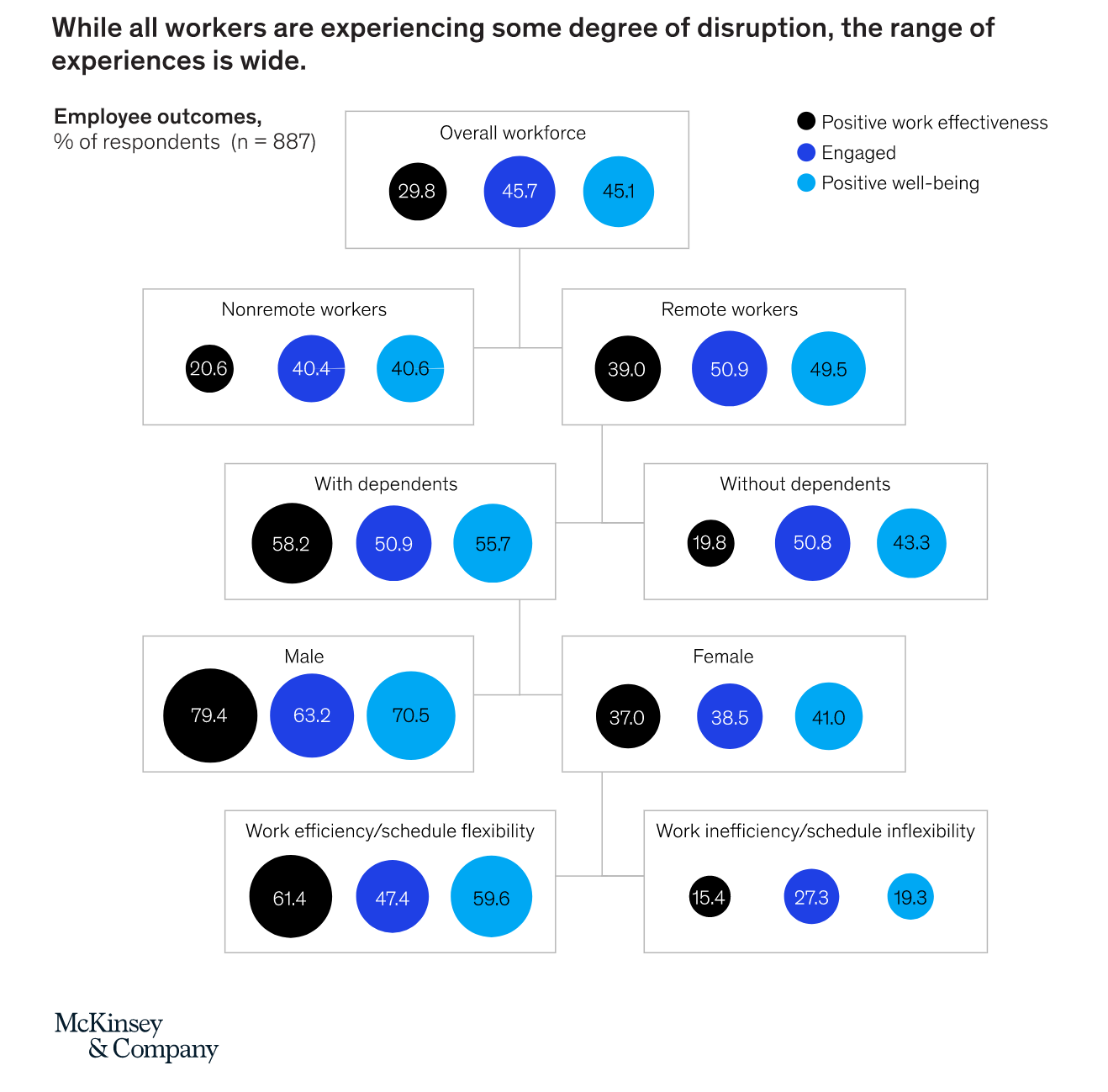Why you should champion powerful KIT days
If you want your staff to feel confident coming back into work after maternity leave, gently remind them of their value by inviting them into the workplace several times during their time away. Just like you might offer a new member of staff the opportunity to attend a team meeting or a social event (remember those?) before their first day of employment, you’ll be helping your longstanding staff make a confident comeback if they use their Keeping in Touch (KIT) or Shared Parental Leave In Touch (SPLIT) days.

Recently, we surveyed 100 women and found that only 30% had taken their KIT days, often citing childcare issues as the barrier. So we thought it high time we bang the drum for KIT days and demonstrate how and why they should be used for everyone’s benefit.
Why should people take KIT days during maternity leave?
Your employee’s home life has been turned upside down and inside out, whether they are coming back after baby number one, two or four. So if you enable them to limber up and prepare everyone around them for their return to work before their official start date, you’ll be doing everyone a favour. And if I may put it fairly bluntly: that readjusting time has to happen at some point, so why not start the process during the government-supported KIT days?
Having contact with their line manager, their team and the wider organisation helps your employee ease back into the ‘mind space’ of work ahead of their full return. Ideas can start to percolate, so that when they are fully back with the team, they are raring to go and full of creative energy.
But KIT days aren’t just about the employee. Yes, it’s essential for them to not only soak up the atmosphere and remember their work confidence, but it’s also about the child settling into nursery, their life partner getting used to a new balance of responsibility at home, and colleagues adjusting to a new team structure.
KIT days advice for line managers
Start the discussions now
I can’t say this often enough – plan early! When you know a member of staff will be going on maternity leave, start your discussions around KIT days. It might seem way ahead of time, but you’ll need to agree on how many KIT days will be taken, when and what they might be used for. Is it better than the days are taken as a chunk at the end of their leave, or dotted through the time away?
What to use a KIT day for
You can use a KIT day for anything you feel will be of use, but agree it mutually between line manager and employee before the day. Here are some ideas to consider.
- Meetings: Team, planning, budget, project scoping, annual strategy, conference
- Coaching: The Talent Keeper Specialists offer specialist return to work coaching to help returnees work through concerns, rebuild confidence and develop a practical action plan
- Administrative: sifting email, sorting new laptops or phones
- Team: meeting or recruiting new members
- Away day
- Training
- Client events
- Conducting performance reviews (along with cover)
- Planning: discussing flexible working, re-shaping role, mapping out deliverables for the first 4-6 weeks back
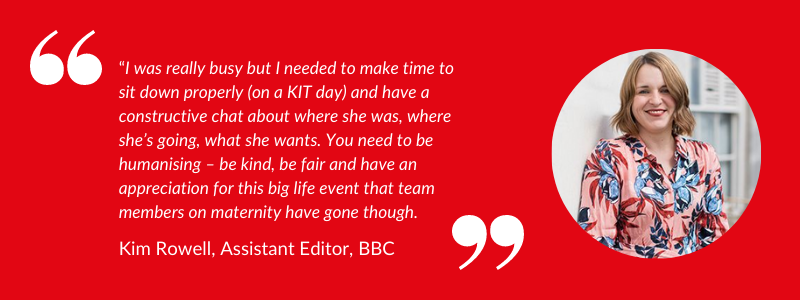
What not to use a KIT day for
KIT days are not meant to be used for delivery. That is, you should not treat it as business as usual and give the employee a huge task which will take longer than one day to complete. A KIT day cannot be relied on or anchored to: it’s a transitional tool to help someone refocus on work, soak up the atmosphere, add ideas to a meeting or to provide information on their specialist subject.
Businesses don’t have to offer all 10 KIT days
KIT days are voluntary for the business as well as the employee. If as a business you can’t afford to top up to the full day rate for the full 10 days, have a conversation with your employee. You could ask them how the days will be used, but be careful not to appear accusatory. Simply be affirming and ask how you can help and what value it will add to the employee to be there for those 10 days. Offer to help set out what she will do on the days to make the most of her time in the office. Of course, it is much easier if this discussion has been had before she goes on leave.
KIT days advice for employees
How should I use my time on KIT days?
This is all about the blend – what do you need to do to make yourself feel as comfortable as possible on day one of your return? If it would make sense to you to schedule back to back meetings with your 1:1 reports and senior leaders, do it. If you’d rather attend a team meeting, then sit quietly in a corner while you work through your emails, do that.
How not to get sucked into work on a KIT day
We recently hosted a webinar for the Victoria and Westminster Business Improvement District and a comment from one of the attendees really struck me. She said she had avoided attending KIT days during her maternity leave so that she didn’t get ‘sucked back in’ to work. This kind of rarely voiced concern about KIT days is more likely to be true in smaller organisations, rather than larger ones with well practiced policies and knowledge about KIT days.
Be proactive. Before you attend your KIT day, set out with your line manager exactly what you intend to spend the day doing. Head off any unreasonable requests for work by reminding your line manager that you spoke about the value of KIT days before your leave started. Be aware that most line managers will try and fill a void with work, so prepare your plan early. If an ask is made of you that extends beyond the work day, remind the line manager that you had already agreed that the KIT days would be treated as standalone events.
How to tell your line manager you would like all 10 KIT days
It might be that you want to be involved in your team’s appraisals, or you’d like to attend a team strategy session. Give your reasons as to why you would like to be present for your KIT days and proactively ask for their support. Communication is key and as before, it really helps if this has been agreed in advance of your leave.
Managing childcare on KIT days
If finding childcare for one-off days is complicated, or you are exclusively breastfeeding, talk openly with your line manager and explain that you would like to bring your baby to a meeting. You could ask your partner or a friend to come with you and sit with your baby while you sift emails, or even wait outside in a cafe while you attend a strategy meeting. It can all be overcome, although it doesn’t always feel like it!
A quick legal download
KIT / SPLIT days are a tool to allow an employee to have contact with employers while on leave under a legal framework. An employee can take 10 KIT or 20 SPLIT days during their maternity or parental leave without bringing their statutory maternity / paternity leave to an end. It is not obligatory for companies to offer KIT days or for parents to take them. KIT days can not be taken in the two weeks immediately after the birth or during accrued holiday time at the end of the leave. More here.
Got a question about KIT days? E-mail jc@talentkeepers.co.uk or find us on Twitter and Instagram @talentkeepersuk.
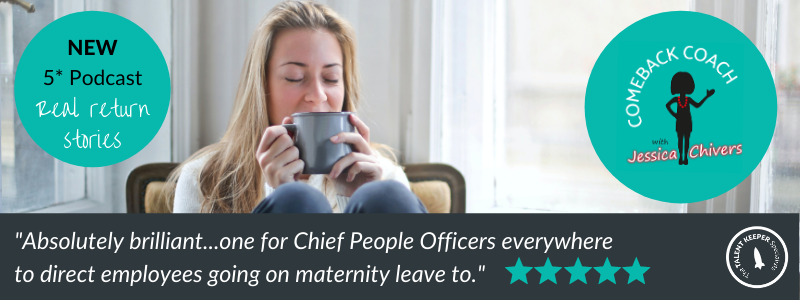
Listen up: Comeback Coach is my new wobbly-bottomed podcast about kick-ass comebacks! It’s an inspiring, accessible look inside the lives of mothers who have overcome the stress and apprehension that goes with taking long leave and replaced it with motivation, engagement and confidence on their return. Share it with your employees and join us!
